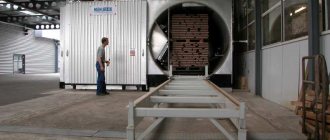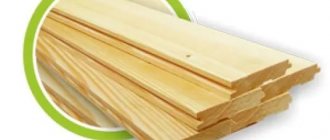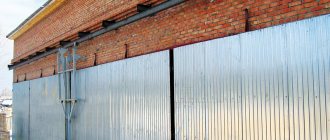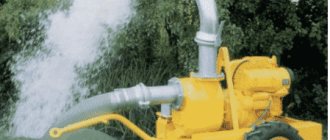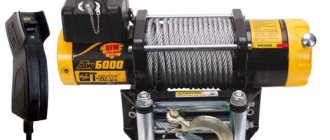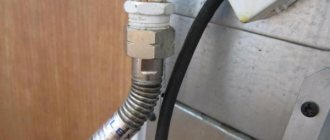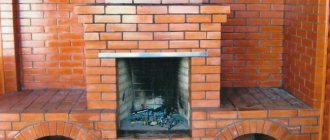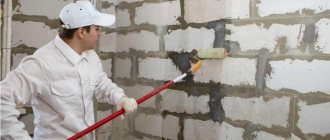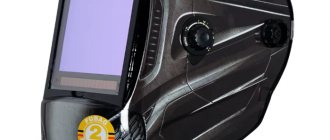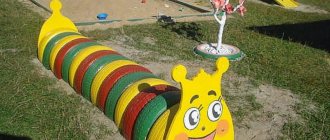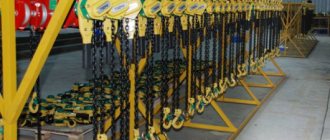When it comes to purchasing a wood drying chamber, the question often arises as to which one to choose. After all, there are hundreds and hundreds of species on the market. Chambers differ in both manufacturers and types of drying. So which camera is right for you?
To do this, you need to understand the operating principle of each type of chamber, as well as how high-quality wood drying occurs. Let's find out in the article.
The main types of drying chambers according to the principle of operation:
- Aerodynamic
- Microwave drying chambers
- Convective
- Condensation
Now let’s look at the parameters of drying quality in the context of the presented types of drying chambers.
The process of drying wood in a chamber
Aerodynamic drying chamber
The cost of an aerodynamic drying chamber is relatively low. But energy costs are high. It is a heat-insulated chamber with a fan. The air is heated by friction against the fan blades. When the board is placed in the chamber, its humidity is distributed evenly.
Next, the drying process begins.
Circulating hot air around the board dries out the board. After drying, when measuring the moisture meter, which measures the moisture content of only the top layer, we will see the humidity indicator that we wanted to achieve. About 8-10%. But if you take a good needle moisture meter, you will see the real moisture content of the board under the surface layer, 25-35%. Because the board remained damp inside. This board cannot be used. There is enormous tension in it due to the difference in humidity (the board will warp, then it will crack).
Therefore, we continue drying. Again, hot air circulates at high speed around the board.
By the way, the flow speed in an aerodynamic drying chamber is almost impossible to regulate.
As you continue to dry the board, its outer layer continues to dry out and becomes dry. When dry, the top layer becomes brittle. 1-3% humidity remains. The dry layer becomes denser and narrows. Moisture leaves the inner layer more slowly. Accordingly, the inner layer narrows more slowly than the outer one. And when the inner layer becomes wider than the outer layer of the board, the board bursts.
From the above, the conclusion suggests itself: it is unlikely that it will be possible to dry wood efficiently in an aerodynamic chamber.
Microwave drying chamber
Quite an interesting piece of engineering soap.
It works on the same principle as a regular household microwave.
- Under the influence of high frequency electromagnetic radiation, wood molecules increase their vibration speed and the wood heats up.
- Drying in a microwave chamber significantly reduces drying time.
But that's where the advantages end. Because such a chamber is expensive, it consumes the same amount of electricity, if not more, than an aerodynamic chamber. Also, during the practical use of microwave cameras, it turned out that microwave wave emitters quickly fail.
To conclude the sentence with which the review of microwave drying chambers began, it is an interesting engineering idea, but it has not been used in practice.
Convection drying chamber
This type of drying chamber can be called the most common type.
The need to dry materials
Drying allows you to solve important problems associated with the further use of wooden blanks. After drying, the tree acquires a number of positive parameters. In the process of such processing, the following tasks are solved:
- dehydration of products occurs to the required percentage of humidity;
- physical and mechanical performance increases;
- technological properties are improved (it is more easily subject to subsequent processing);
- increased resistance to the negative effects of biological factors (formation of fungi, rotting, insect penetration);
- heat and electrical conductivity decreases;
- The consumer properties of finished products are expanding.
To solve problems associated with drying wood, the production of drying chambers based on various physical principles has been established. They are capable of carrying out dehydration operations of various types of wood.
Drying units based on SKRON AERO
Drying chambers supplied assembled
| SKRON AERO drying chambers with aerodynamic heating | |||||||
| Loading*, m3 | 7 | 9 | 11 | 14 | 18 | 20 | 25 |
| Camera dimensions**, m | 7.7x2x2.2 | 7,7×2,45×1,9 | 7,7×2,45×2,2 | 7,7×2,45×2,6 | 14,5×2,45×1,9 | 14,5×2,45×2,1 | 14,5×2,45×2,45 |
| Engine power, kW | 22 | 30 | 37 | 45 | 55 | 75 | |
Drying complexes supplied in modules
| Drying complexes SKRON AERO with aerodynamic heating | ||||||
| Loading*, m3 | 20 | 24 | 28 | 36 | 50 | 60 |
| Camera dimensions, m | 7,7×4,9×1,8 | 7,7×4,9×2,4 | 7,7×4,9×2,6 | 14,5×4,9×1,9 | 14,5×4,9×2,45 | 14,5×4,9×2,7 |
| Engine power, kW | 74 | 90 | 110 | 150 | ||
Convector dryers
A convector-type wood drying chamber is used for various types of timber. Such devices have a simple design, they are inexpensive to maintain and reliable. That is why they are most popular in production.
The work is carried out due to heating from a gaseous carrier (drying agent). When heated, the raw material dries out. The drying agent can be steam, flue gas or air. The moisture released from the timber serves to additionally moisten the agent, and the excess is sucked out with the help of ventilation.
The air exchange rate in a convection dryer does not exceed 2% of the total amount, therefore, energy savings are felt.
The camera body is made of metal and is placed on a monolithic columnar foundation. The metal used for the body is carbon steel or aluminum with an anti-corrosion coating. The body is sheathed on both sides with aluminum sheets. The chamber is insulated using mineral wool in the form of slabs. You can purchase a convection chamber of both domestic and foreign production.
Aerodynamic drying
Chamber drying of lumber under aerodynamic conditions has become widespread due to its fairly low price and simple design. In addition, to operate such a device, no specific knowledge of maintenance personnel is required. Profitability is achieved by drying up to 2000 m³ per year of coniferous timber.
The disadvantages include:
- high level of energy intensity of the drying process. In order to dry freshly sawn wood, 1.15-1.3 kWh is required to evaporate 1 liter of moisture. Electricity is approximately 240-290 kWh/m³
- There is no way to regulate the temperature. There is only the opportunity to slow down the rate of its increase by changing the flow area of the centrifugal fan
- it is not possible to organize technological drying according to the schedule of the “Guiding technical materials on the technology of chamber drying of wood” regimes.
This chamber is a quadrangular box. It is convenient to load wood into it by machine or along railway tracks. Drying occurs under the influence of aerodynamic energy. Warm air moves in the chamber under the influence of a special aerodynamic fan. Due to the compression of air in the chamber, the temperature on the centrifugal fan increases, namely on its blades. Consequently, aerodynamic losses become thermal energy. Heat can be pumped into the chamber reversely or dead-end, it all depends on the design features. The chamber opens only upon completion of the drying cycle.
Types of drying chambers and details of wood drying
Especially for those who are beginning their acquaintance with lumber drying, we decided to write an introductory, generalizing article in which we want to talk about the main types of drying chambers and some of the intricacies of the wood drying process. We hope that this article will be useful to you.
The process of drying wood is quite complicated. Moisture removal occurs as a result of evaporation. It is worth considering one important point - the moisture in the inner layers of wood must move to the surface before evaporating. However, the rate of moisture movement from the inner layers to the surface is lower than the rate of its evaporation from the surface. It should be concluded that the duration of drying of assortments depends on the speed of moisture movement inside the wood. But the surface layers quickly reach equilibrium moisture content with the environment and become impermeable to moisture. Because of this, the drying process slows down and deformation of the lumber may occur. In order to avoid this, a humidification system is installed in the drying chambers, which moisturizes the surface of the wood. Also very important is the correct placement of lumber in the stack. When the wood dries, it takes on the same shape that was originally given.
Speaking about the types of drying chambers, first it is worth mentioning two main ones: condensation and convective .
The most popular and frequently used are convection chambers . In this type of chamber, thanks to the circulation of jets of hot air flow, the required percentage of moisture from the wood evaporates.
In terms of quality, energy intensity, and variety of dried rocks, the convective drying method is one of the most effective, because allows you to dry wood of various species and thicknesses with good quality.
With the condensation drying method , after heating and air circulation, the moisture evaporating from the wood falls on the condensate, where it is cooled and removed to the sewer. In chambers of this type, as practice shows, it is good to dry oak and deciduous wood in a small volume; drying coniferous wood is more expensive. Longer drying time as opposed to convection.
There is another rare method of drying wood - vacuum . In press-vacuum drying chambers, the body consists of a metal material (stainless steel, aluminum). The lumber is loaded by hand, alternating with aluminum heating plates through which hot water circulates. After heating the chamber, under the influence of vacuum, the plates press on the wood, which promotes the release of moisture. The volume of the chambers does not exceed 50 cubic meters. This type of drying is the most expensive.
Drying units based on LKA
LKA drying chambers supplied assembled
| Reversible drying chambers with aerodynamic heating | |||||||
| Loading*, m3 | 6 | 8 | 10 | 12 | 15 | 20 | 25 |
| Camera dimensions**, m | 7.2x2x2 | 7,2×2,45×1,8 | 7,2×2,45×2,1 | 7,5×2,45×2,4 | 7,5×2,45×2,7 | 14×2,45×2,1 | 14×2,45×2,45 |
| Engine power, kW | 22 | 30 | 37 | 45 | 55 | 75 | |
LKA drying complexes supplied in modules
| Reversible drying complexes with aerodynamic heating | |||||
| Loading*, m3 | 20 | 24 | 30 | 40 | 50 |
| Camera dimensions, m | 7,2×4,9×2,1 | 7,5×4,9×2,4 | 7,5×4,9×2,7 | 14×4,9×2,1 | 14×4,9×2,45 |
| Engine power, kW | 74 | 90 | 110 | 150 | |
Notes:
* The loading volume of the forest dryer is calculated for edged lumber with a thickness of 40 mm. To convert to unedged, the load volume must be multiplied by 0.7.
** The drying complex means two identical drying chambers with a common wall.
When using electric motors of lower power, the cost of the drying chamber is reduced, the energy consumption for drying 1 m3 of wood remains the same due to the increase in drying duration, but you are deprived of the opportunity to use the normal drying mode. The use of a smaller electric motor when drying hardwood is justified.
Vacuum drying
The vacuum drying chamber for wood is designed for valuable types of timber, such as teak, wenge, rosewood and others. This unit operates from convection heating of wood and vacuum removal of excess moisture. The process takes place at a maximum temperature of +65. However, due to a vacuum pressure of 0.09 MPa, boiling occurs at 45.5. Such conditions make it possible to dry the wood without the aggressive effects of high temperature. Thus, high internal stress does not arise and the wood is not subject to cracking.
During drying, when the temperature rises to 65 degrees, the automation turns on and the electric boiler turns off. The upper layers of timber slowly cool, and moisture from within flows to drier areas. During one drying period, about 250 such cycles occur. Under such conditions, moisture is evenly drawn out along the length and depth of the material. After drying, the material is characterized by a moisture level within 4-6%.
Microwave drying
Such devices were invented quite recently. They look like a closed metal container. The work is carried out under the influence of the reflective surface of microwave waves. The operating principle is similar to that of a conventional microwave. Using a microwave chamber, raw materials of any cross-section and dimensions are dried. Microwave cameras have a simple design; settings allow you to select any wavelength.
Therefore, a wide variety of timber products can be dried. The mode of attenuation of microwave waves guarantees regulation of the temperature inside the chamber. Using reversible fans, excess moisture is removed from the system. Microwave drying is compared with dielectric drying, which is considered the most effective, but is not used in Russia due to high energy costs.
The main disadvantage is the high energy consumption, like that of aerodynamic dryers.
